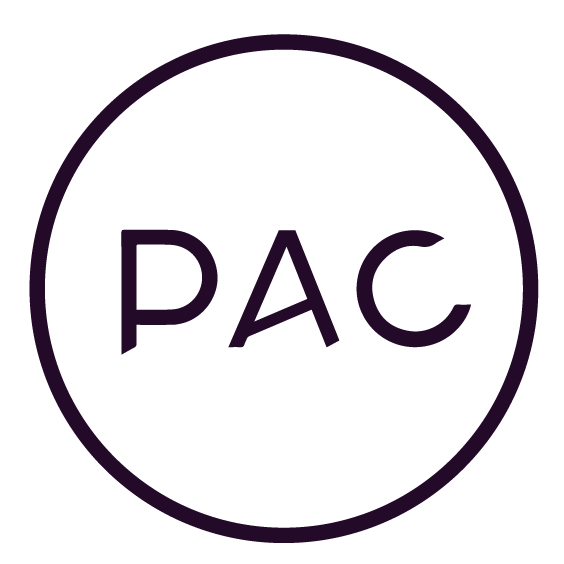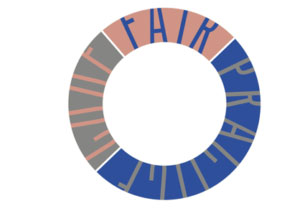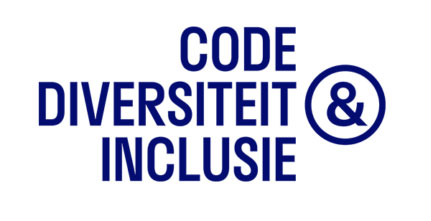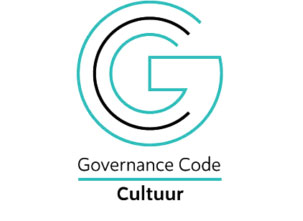
Hidden histories
Underrepresented stories about citizens of Amsterdam with roots in Asia during the Second World War
Who were the Amsterdammers (citizens of Amsterdam) with Asian roots? What did they experience during the war? What happened to them? For the first series of Asia x Amsterdam, the stories will focus on the area of the Nieuwmarkt in Amsterdam. In light of the national commemoration of Remembrance Day on May 4 and the celebration of Liberation Day on May 5, PAC looked for hidden stories about people with roots in East, South and Southeast Asia who witnessed the Second World War in this neighbourhood.
These stories are also displayed on the public presentation, which is showcased from May 3 tot 8 at the Nieuwmarkt. On this page, you will find other war stories, including stories from outside of Amsterdam.
The Nieuwmarkt
The Nieuwmarkt is one of the most iconic places in Amsterdam. The famous square and surrounding streets were known as the Jewish quarter for centuries, but the Second World War would forever affect this name: the Nieuwmarkt and the area around the square became part of the so-called Judenviertel, an attempt by the German occupiers to concentrate as many Jewish people in one area as possible. On the border of this district lies the Binnen Bantammerstraat, where many Chinese dock workers, entrepreneurs and later families had settled since the early 1910s. How the Chinese community and other people of Asian descent experienced the war in Amsterdam is unknown to many. All the more reason for PAC to research this topic.

A temporary closure of the Jewish quarter after the strike on February 25, 1941; the Nieuwmarkt is surrounded by barbed wire, July 1943 | Stadsarchief Amsterdam | Creator unknown

A group of resistance fighters and Jewish people in hiding gathered in a room [possibly listening to an illegal radio broadcast]. This photo includes Bep Customer, Rosette Aussen-Muscoviter, Dirk Pos, Benno Aussen, Lizzy Pos and Oey Tjeng Sit, ca. November 1943- May 1945 | Amsterdam | Hans Aussen, United States Holocaust Memorial Museum
A hidden past
The photo on the left is a rare piece of visual evidence showing connections between Amsterdam citizens with Asian roots, members of the resistance, and people in hiding during the Second World War. The photo was taken at a hiding place at the Banstraat where the married couple Dirk Pos and Marie Scheeres provided shelter to various resistance fighters and other people in hiding. You may also notice the man with Asian facial features portrayed in this picture – it is Oey Tjeng Sit (1917-1987), born in Purwokerto a city in Central Java (Indonesia). Oey Tjeng Sit would eventually take over a pharmacy in the Amsterdam neighbourhood called Jordaan during the fifties. This is also where he was able to make a name for himself as an artist.
The connection between Oey Tjeng Sit, the resistance fighters and people in hiding can be made based on this picture, but unfortunately, nothing is known about his involvement in the resistance. This photo embodies the essence of this initiative: there is relatively little representation of people of Asian descent who experienced the war in the Netherlands. This has created the image that they were not present or remained completely aloof during the war. This highlights the importance of calling attention to forgotten perspectives and stories of people, so they will once again be part of the collective memory of the city.
Resistance and survival
As the German invasion of the Netherlands commenced on the 10th of May 1940, an estimated 900 Chinese and several thousand people from the former Dutch East Indies were living in the Netherlands. These two groups are known to be one of the first and largest migrant groups in the Netherlands with roots outside of Europe.
The first Chinese people to arrive in the Netherlands were mostly seamen who ended up in the port cities of Amsterdam and Rotterdam to break the seamen’s strike in 1911. Contrary to the Chinese, migrants from the Dutch East Indies were mostly wealthier students. As for migrants from Surinamese descent, there were only a few thousands living in the Netherlands at the start of war. Like the migrants from the former Dutch East Indies, they were often part of the wealthier elite, were mainly of Jewish or Creole decent, and to one’s knowledge, they rarely had Hindu or other Asian roots. Other Asian communities were relatively small or would only immigrate to the Netherlands in the following decades.
The group perhaps best known for their active role in the resistance in the Netherlands were students from the former Dutch East Indies. They often belonged to the upper class within the context of their country of origin. Due to the closing of the universities by the German occupier, many of them joined the resistance. In addition, other war stories will offer an insight into the lives of marines, restaurateurs, and other Amsterdammers of Asian descent.
Chan Chi
Various groups of Chinese in the Netherlands were deployed to the eastern cities of Venlo and Staphorst to build roads, including Chan Chi. He was a steward on a ship and came to the Netherlands in 1936. Chi decided to stay in the Netherlands. After all, his home country of China was at war with Japan. He settled in the Binnen Bantammerstraat and continued his work as a steward until the war broke out. Chi lost his job and he was sent to Staphorst by the Amsterdam Employment Office (Arbeidsbureau Amsterdam) in 1941 to build a road with the low wage of four guilders a week. This road, the Ebbinge Wubbenlaan, was later known as the ‘Chinezenweg’.
A couple of decades later, Chi’s story was documented in a book titled Sporen van oorlog: ooggetuigen over plaatsen in Nederland (1989) (Traces of war: eyewitnesses [sharing stories] about places in the Netherlands). In these records, he mentioned the two years that he worked on the so-called Chinezenweg. During the first year, there were seventy Chinese labourers working on the road and during the second year, only thirty people remained. According to Chi, the bystanders were afraid of them at first. He further described the camp manager, who was a member of the Dutch National-Socialist Movement (NSB), and pointed out that he was rather strict to them [the Chinese labourers]. The former steward was responsible for the interpreters and the warehouse. In addition, he also brought sick people to the doctor by bike.
The Chinese workers were allowed to go home for one weekend once every two weeks, which meant that Chi could frequently return to Amsterdam. During the winters, he worked in Amsterdam: for the municipal laundry services, Luijcks factories and later also in the glass factory in the Warmoesstraat. Chi eventually moved to The Hague in 1944. According to him, nothing significant happened to him in later years.
Contance Victorine (Vicky) Tan
Besides the Nieuwmarkt area, there were people of Asian descent living in other parts of Amsterdam as well. For instance, Vicky Tan, a medical student born in the Dutch East Indies, who later became a child psychiatrist and wife of Wim van Norden, co-founder of a paper titled Het Parool. This is a famous Dutch-based newspaper that started as an illegal paper during the war and still exists today. Tan’s close proximity to the resistance efforts in the city suggests that she might have helped bringing Jewish children to hiding places in the city.
Harry Lim
Harry Lim (Chinese name: Lim Tjing Lok) (1920−1945), a student from Amsterdam, who lived at Zwanenburgwal and ’s Gravenhekje during the war, was also active in the resistance. Harry Lim was born in Surabaya (Indonesia) and came to the Netherlands as a high school student. After high school, Lim moved to Amsterdam to study medicine. He became a member of the student corps and joined the P.A.L.L.A.S. fraternity, many of whose students would join the resistance as the universities closed in 1943. An example of Lim’s efforts in the resistance can be found in the Amsterdam City Archives (Stadsarchief Amsterdam). It is a certificate (Bescheinigung) with a forged stamp, both forged by Lim himself. In December 1944, he was arrested and deported via the transit camp Amersfoort to concentration camp Neuengamme, where he may have worked as a doctor. Lim died shortly before the liberation, in April 1945.

Bescheinigung for Willem Bloemendal, forged by Harry Lim, 1944 | Amsterdam | Stadsarchief Amsterdam

For a long time after the liberation, it was unknown whether Harry had survived the war. His father, J.K. Lim, placed advertisements in various newspapers hoping to find his son again | Advertisement, July 11, 1945 | De Waarheid | The Hague
More stories from outside of Amsterdam
Indonesian students in Leiden
During the war, approximately 100 Indonesian students were enrolled at Leiden University. The majority of the students studied medicine or law. Some of the Indonesian students in Leiden from the Clubhouse Indonesia joined the strikes following the dismissal of Jewish staff members of the university. The Germans eventually closed its doors in 1940, several years earlier than other universities in the Netherlands. The motto of the Indonesian student resistance members was ‘First liberate the Netherlands, then Indonesia’. One of the most important contributions to the resistance was the production of illegal magazines such as Madjallah and later De Bevrijding, with bold arguments, fighting for an independent Indonesia.

Party at Clubhuis Indonesia at the Hugo de Grootstraat 12 in Leiden, 1939 | Leiden | KITLV 31530 | Special Collections of Leiden University
“Because of the strike by Leiden students, the university was closed. We continued studying, reading books and held discussions at the Clubhouse, but we could not take exams. (….) For the PI members, the transition to the German occupation was not as significant. We were used to operating illegally. However, we found fascism worse than colonialism as the Aryan race was deemed the superior race. Moreover, freedom did not exist within fascism. (…) With the German occupation, all ties with Indonesia were severed. This was a big blow, because we lost contact with our relatives and did not receive any money to study and live. The Ministry of the Colonies made sure that we still received a monthly allowance.” – R.M. Rasono Woerjaningrat, a Leiden student from the Dutch East Indies during the war.
Participating in resistance efforts was not without its risks and dangerous, to say the least. One of the most famous Indonesian students in the resistance was the Leiden sociology student Irawan Soejono (1920-1945). He was born in East Java and emigrated to the Netherlands shortly before the outbreak of war in 1940. During the war, he contributed to the aforementioned magazine De Bevrijding, written by the Indonesian student organization in the Netherlands Perhimpoenan Indonesia (PI). Soejono was eventually murdered by a German soldier in January 1945, when he tried to flee during a raid on the Breestraat. While fleeing, he carried parts of a typewriter with him. He would never live to see the liberation in the Netherlands and the independence of Indonesia.
Stories about people of Moluccan descent in Asia and Oceania
In various parts of the world, people of Asian descent fought for freedom under the Dutch flag, even though they themselves often had to deal with discrimination and other inequalities. In layman’s terms, “that freedom” didn’t always mean freedom to them. The image on the right shows a message about the burial of several people from the so-called Ordedienst (OD) who were executed by the German occupiers, including Eddy Latuperisa. He was a captain in the Royal Dutch East Indies Army (KNIL) and was involved in various espionage and sabotage activities. In 1942, Latuperisa was arrested for sabotage, aiding the enemy and Wortbruch. The latter is the oath that Dutch officers had to take promising that they would not undertake any hostile activities against the Germans. He was eventually sentenced to death and shot on the Leusderheide.
The only soldier of Moluccan origin to receive the Willems-Orde, the highest Dutch military decoration, was KNIL soldier Julius (Ulys) Tahija. He received the award for his efforts with the Netherlands Forces Intelligence Service (NEFIS). The NEFIS operated from Australia, which used submarines to drop off spies on the coast of occupied territories at night to collect information from the Japanese opposition, among other things.

Newspaper article, November 19, 1945 | Algemeen Handelsblad | Amsterdam
Collaboration
There are relatively few stories of Amsterdammers and other Dutch people of Asian descent collaborating with the German occupiers. As for the cases we have found during our research, it is not always as explicit as one might think. Consider, for example, the restaurants in the Binnen Bantammerstraat. The food shortage did not put everything on hold for the Chinese restaurateurs. During the Dutch famine (Hongerwinter) of 1944-1945, the area around the Nieuwmarkt was severely affected. Nevertheless, some restaurateurs managed to survive by using their own (dried) food supplies, among other things. Some of their clientele were also German military personnel, which meant that the restaurateurs sometimes retained privileges in exchange for their hospitality. From their point of view, it probably was more of a survival strategy to protect their own community than an active act of collaboration.

Chinese turned out to be a traitor [Chinees bleek een verrader], November 6, 1950 | De Zaanlander | Alkmaar
During the desk search, we have found several newspapers and a personal report containing stories about collaboration by people of Asian descent. For instance, this newspaper clipping about a person named Jong Baw, a person of Chinese descent who had betrayed several illegal workers by reporting them to the authorities. Why Baw had betrayed these illegal workers, who they were, and whether this betrayal was related to conflicts within their own community is unclear. One other source suggests the latter. More research is needed on this newspaper clipping and other similar stories of collaboration to get a better understanding what exactly took place within these communities.
Liberation Day in Amsterdam on November 8 and 9, 1945
While the Netherlands was liberated on May 5, 1945, people in Asia were still fighting against the Japanese occupiers. The war on the Asian continent only ended later that year on September 2, 1945. The Chinese community in Amsterdam managed to organise a multi-day festival in just a short amount of time. It started with a performance about the liberation of China on Dam Square and was followed by a dragon dance parade through the city center of Amsterdam.

Your story
The search goes on. This public and online presentation is the first series of stories that we were able to find through prior research done by other institutions and ourselves. We are still looking for stories about people with Asian roots who experienced the Second World War in Amsterdam and in other cities in the Netherlands. Do you know anyone who might fit this description? A family member or a distant acquaintance? Please do not hesitate to contact PAC. Send them in via the form below or send an email to info@pac.tv.
Colophon
Special thanks to the support and information provided by the following institutions and experts, and other individuals: the families of Harry Lim, Oey Tjeng Sit and Vicky Tan, het Chinese Indonesian Heritage Center, the NIOD, the platform Joods Amsterdam, the National Archive (The Hague), the Dutch Resistance Museum, and the City Archives Amsterdam.
This online and public presentation was made possible by the Municipality of Amsterdam and the Amsterdam 4 en 5 comité.





